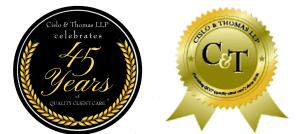In a unanimous decision, the Supreme Court held in Hana Financial v. Hana Bank that the issue of whether two trademarks are “legal equivalents” as to “create a single, continuing commercial impression” and may be tacked together for determining priority of the marks as a whole is a question of fact and should be decided by a jury.
Respondent Hana Bank (“Bank”)—a Korean entity originally by the name of “Korean Investment Finance Corporation”—established Hana Overseas Korean Club (“Club”) to provide financial services to Koreans expatriates in the United States. In 1994, Petitioner Hana Financial Inc. (“Financial”) was incorporated in California and then obtained a federal service mark registration for the mark “Hana Financial” in 1996. In 2001, in part because of Financial’s registration, Bank was unable to register “Hana Bank” as a trademark but continued to use its mark, starting operations in New York in 2002. Financial sued Bank for trademark infringement and Bank denied infringement and counterclaimed seeking cancellation of the “Hana Financial” mark.
During trial, the issues narrowed to the issue of infringement for which Bank relied on the doctrine of “trademark tacking”, which allows owners of two marks that are “legal equivalents” to view them as one for the purposes of establishing priority. Bank offered evidence that the use of the name “Hana Bank” was a part of the logo associated with Club’s offering of financial services and thus sufficient to become the senior user of the mark. Financial argued that the marks are not similar enough for tacking to be appropriate.
The District Court presented the issue of tacking to a jury, which found for Bank and decided the marks are legally the same. The Ninth Circuit also affirmed, although the court noted that there was a split amongst the circuits. On June 23, 2014, the Supreme Court granted certiorari to resolve the circuit split and decide whether a judge or jury should decide on the issue of tacking.
The Supreme Court held that when a test relies on what an ordinary consumer understands to be the impression that a mark conveys, the test “falls comfortably within the ken of the jury.” The Supreme Court clarified that judges may still make a tacking determination on a motion for summary judgment and if the parties have chosen to try their case before a judge; otherwise, the tacking issue is property reserved for the jury.



